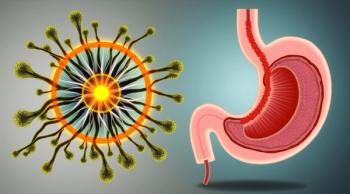
Do You Know Where Your Foley Is?
During the fall of 2004, the Idaho infection control department at Saint Alphonsus Regional Medical Center (SARMC) in Boise, Idaho, began using a Web-based data-mining software system (MedMined). As a result of using MedMined, it was identified that SARMCs Urine Nosocomial Infection Markers (NIMs) (likely nosocomial urinary tract infections) were steadily increasing throughout the facility during calendar year 2005. It was further identified that this was not only a patient safety issue, but a cost and length of stay issue. Based upon further analysis of SARMCs financial data and census data, each urine NIM marker was adding approximately $3,800 (variable cost) and 3.21 added days to each visit. As a result of this upward trend, a multidisciplinary team was created with members from the infection control department and the Nursing Quality Outcomes Committee.
Since June 2006 there have been several interventions that have been implemented using evidenced-based practices and by utilizing Six Sigma methodologies. One key focus area was the care of patients with Foley catheters. During a prevalence study conducted in April 2006, SARMC identified that only 5 percent of patients had their Foley catheters secured. It was also noted that in many cases drainage bags were touching the floor (40 percent of time), dependent loops (35 percent of time), tamper-proof seals were broken (36 percent of time), and many patients who could ambulate had Foleys (29 percent of time) that may have not been necessary. This prevalence study paved the way for many interventions (both hard-wired and soft-wired).
Hardwired Interventions
- StatLock Foley securement device was tried and implemented hospital-wide in October 2006. Compliance rate with securing Foley catheters went from 5 percent to 76 percent. Shortly after implementation StatLock was included in the Foley kit.
- Foley catheter kit change happened hospital wide in August 2006. The Bard Medical I.C. Complete Care Foley has updated antimicrobial agents in the tubing and drainage bag to help prevent urinary tract infections.
- Softwired InterventionsÂ
- A prevalence study was conducted in April 2006 on all patients who had Foley catheters placed. The prevalence study measured a variety of items associated with the care and placement of the Foley catheter and drainage bags. In June 2006, results and recommendations of the study were disseminated to all clinical staff caring for patients who may have Foley catheters in place.
- With the assistance of our marketing department we were able to develop an innovative and professional poster campaign using our own employees who are perceived as leaders in their departments. These posters involved unique home-grown slogans with added nursing humor. Each poster (featuring five different themes) focused on one aspect of Foley care, whether that was getting the Foley out when clinically possible or securing the Foley in place. The posters were rotated monthly and the clinical staff members were always excited to see the next poster roll out. By involving our direct frontline caregivers in a poster campaign we were successful in creating ownership and responsibility for preventing urinary tract infections. It is believed that the posters have been one of the key successes to reducing Urine NIMs at SARMC and have given our clinical staff added ownership.
- Articles were written and published in our SARMC publications which are read by our employees and physicians. These articles created awareness and informed everyone of this important hospital-wide initiative.
- Urine NIM data (nursing unit specific) and feedback was given through our Nursing Quality Outcomes Committee data boards that are posted on the nursing units displaying their nursing unit specific data for a variety of patient safety indicators. Urine NIMs are posted by rate (per 1000 patient days) every quarter so nursing staff are aware of their progress.
- Several other interventions are currently in the process of being implemented including a nurse driven protocol to discharge a Foley catheter based on clinical indications. Specimen collection technique and specimen collection time to the lab are also being reviewed and evaluated.
Results
Since July 2006, SARMC has seen an 11 percent reduction in its Urine NIM rate throughout the organization. The Urine NIM rate decreased from 4.24 to 3.79 per 1,000 patient days. It is estimated that this decrease has prevented 160 additional days in the hospital and approximately $190,000 in variable costs.
Team members involved in the project were Ryan C. Lund, Debra Deyton, Patty Huffman, Marsha Franklin, Theresa Polzin, Chris Dent, Aline Lee, Mary Mager, Prisilla Lynn, Phyllis Cooper and Suzanne Wood. Saint Alphonsus is a 365-licensed bed regional medical center serving people throughout the Northwest. Saint Alphonsus emphasizes care that is patient-centered, innovative and community-based, and is renowned for its state-of-the-art digital environment and pioneering technologies, award-winning clinical services, a nationally accredited Life Flight program, and the regions Trauma Center.
Ryan C. Lund, MPH, CIC, is the infection control manager for Saint Alphonsus RMC in Boise, Idaho.
Newsletter
Stay prepared and protected with Infection Control Today's newsletter, delivering essential updates, best practices, and expert insights for infection preventionists.




